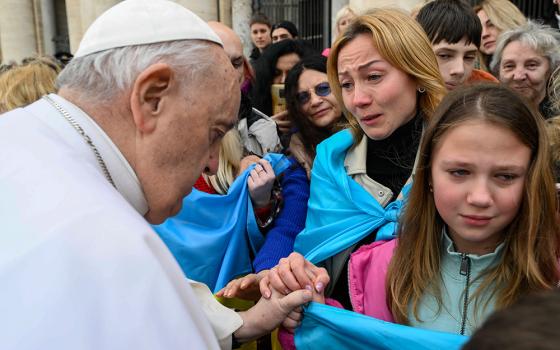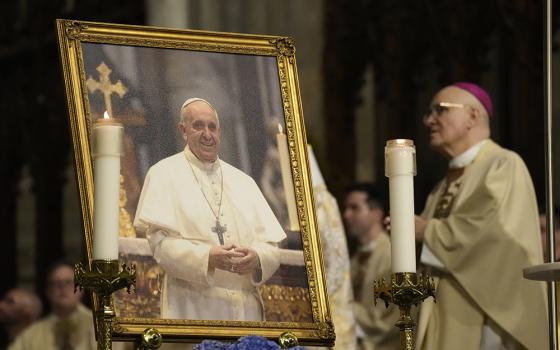Monday evening, tens of thousands of Hong Kong residents continued to swarm the streets inside and around the administrative region's Central District in a more festive, peaceful, even prayerful mood following a clash with police Sunday, when they launched their civil disobedience movement for democracy.
By Monday, crowds had swelled to areas outside the Central District. Students boycotted classes, banks closed and light-rail mass transit in the area halted.
The confrontation on Sunday that wounded more than 40 people drew an "urgent appeal" from Cardinal John Tong of Hong Kong diocese for restraint and calm. The cardinal called upon the Hong Kong Special Administrative Region government "to put the personal safety of fellow citizens as her prime concern."
In the copy of his letter of appeal sent to NCR on Monday afternoon, Tong urged government forces to exercise "restraint in deployment of force" and to listen "to the voice of the younger generation and of citizens from all walks of life."
He referred to the clash between police and protesters in Hong Kong's Central, Admiralty and Wanchai districts the previous day as "regrettable events" and expressed his "sincere wish that all those who are trying to voice out their grievances will be persistent in keeping calm."
By disrupting Hong Kong life and freezing its economy, Occupy Central with Love and Peace protests, known as "Occupy Central," aim to press for democratic change, mainly in allowing Hong Kong's citizens to freely choose their top leaders.
The protests were fueled by the hard-line decision Aug. 31 by Beijing's Standing Committee of the National People's Congress that limits the scope for "universal suffrage." People of Hong Kong can vote for the chief executive there in 2017, only after Beijing decides which two or three people can stand for election.
Beijing officials reportedly do not want to allow Hong Kong a broader measure of democracy that could challenge or embarrass them -- or trigger similar demand from cities in the mainland.
Earlier Monday, Assistant Commissioner of Police Cheung Tak-Keung told a press conference that around 40 people, including 12 police, were injured when protesters charged through police cordon lines Sunday.
Cheung said police warned oncoming protesters and gave them time to comply with orders. He said police used tear gas 87 times in nine locations. They also resorted to using pepper spray and batons to keep their distance and prevent injuries, the commissioner said. He said police used "minimum force."
After 9 p.m. Monday, a group of Christian protesters that gathered near Nathan Road and Argyle Street carried a big white cross, sang and prayed for the future of Hong Kong.
Hong Kong's pan-democrats are calling for Chief Executive C.Y. Leung to resign his post and say they will ask the president of the legislative council to impeach him.
[N.J. Viehland is an NCR correspondent based in the Philippines.]




